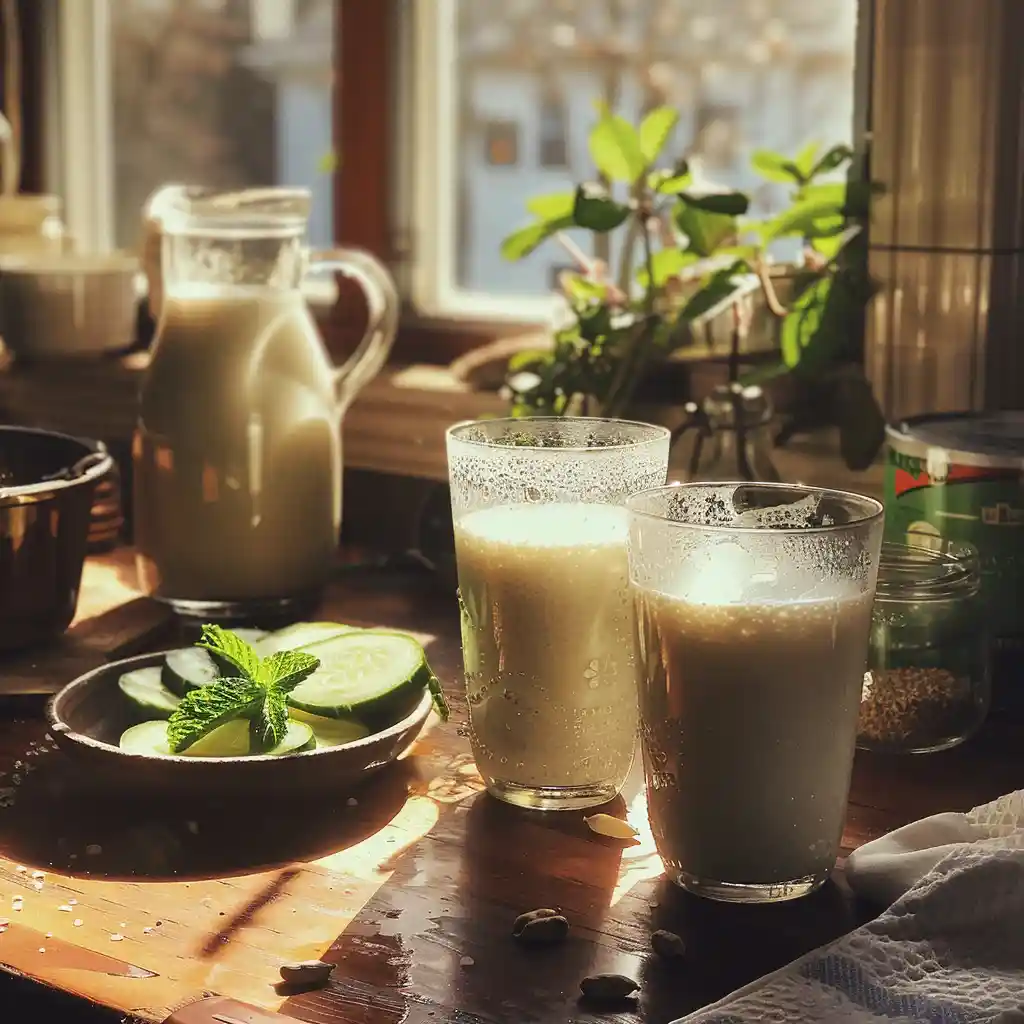Our fermented milk beverages journey starts right here in my cozy kitchen, but it actually goes back thousands of years across continents. From the creamy tang of kefir in Eastern Europe to the cooling notes of Indian lassi, these drinks aren’t just flavorful—they carry stories, traditions, and even possible wellness benefits. I first stumbled into this world while traveling through Turkey, sipping ayran at a street café, and I was instantly hooked.
In this article, I’ll walk you through everything I’ve learned (and tried!) about fermented milk drinks. You’ll discover what makes them different from regular dairy, why cultures around the globe have passed down their recipes, and how you might make a probiotic-rich kefir or lassi right at home. Whether you’re looking to add variety to your drink rotation, support digestion, or just curious about the growing trend of fermented foods, this guide is crammed with helpful info.
We’ll also peek into the nutrition benefits, compare store-bought versus homemade options, and even see how these drinks fit into cooking beyond the glass. Curious about a fermented milk drink beginning with “K”? We’ll get to that too.
Looking for inspiration? Try this kefir weight loss drink as a delicious start to your probiotic journey.
Now, let’s dive into Part 1: what these drinks really are and why they’ve stood the test of time.
Print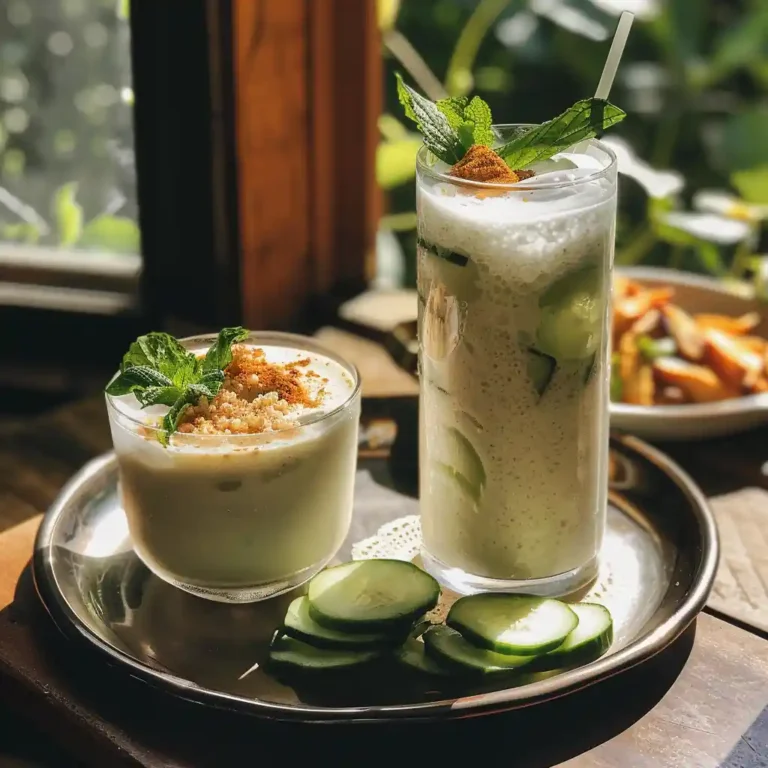
Fermented Milk Beverages
A flavorful journey through probiotic-rich fermented milk beverages like kefir, lassi, and ayran—steeped in culture, wellness, and centuries-old tradition.
- Total Time: 10 minutes + 24-48h fermentation
- Yield: 4 servings 1x
Ingredients
- 4 cups whole milk (cow, goat, or plant-based alternative)
- 2 tbsp kefir grains or plain yogurt (as starter culture)
- Optional: pinch of salt, spices like cardamom or cumin, or fresh herbs
- Optional: fruit like mango, berries, or cucumber for lassi variations
- Filtered water (for diluting or rinsing grains)
Instructions
- Sterilize a clean glass jar and utensils before use.
- Pour milk into the jar and add kefir grains or yogurt starter.
- Cover the jar with a breathable cloth and let it ferment at room temperature for 24–48 hours.
- Once tangy and slightly thickened, strain to remove kefir grains (if using).
- Refrigerate and enjoy plain, or blend with water and spices for lassi or ayran variations.
- Store any leftover fermented milk beverage in the fridge for up to a week.
- Repeat the process with reserved grains for the next batch.
Notes
Fermentation times may vary with temperature—taste test at intervals. Always use clean equipment. For dairy-free options, try coconut or almond milk with probiotic capsules.
- Prep Time: 10 minutes
- Cook Time: 0 minutes
- Category: Beverage
- Method: Fermentation
- Cuisine: Global
Nutrition
- Serving Size: 1 glass (approx. 200ml)
- Calories: 110
- Sugar: 6g
- Sodium: 90mg
- Fat: 5g
- Saturated Fat: 3g
- Unsaturated Fat: 2g
- Trans Fat: 0g
- Carbohydrates: 8g
- Fiber: 0g
- Protein: 6g
- Cholesterol: 15mg
What Are Fermented Milk Beverages?
If you’re new to the idea of fermented milk beverages, you’re not alone. I once thought they were just fancy yogurt drinks, but they’re so much more. At their core, fermented milk beverages are dairy drinks made by adding live bacteria or yeast to milk, which kickstarts a natural fermentation process. This simple act transforms the texture, flavor, and nutritional profile of plain milk into something far more complex and, honestly, exciting.
During fermentation, natural sugars in milk (mainly lactose) are broken down by these friendly microbes. The result? A slightly tangy, often bubbly drink that may support digestion and gut health. It’s the same kind of fermentation that gives us kombucha, kimchi, and sourdough—only here, it’s creamy and drinkable.
What makes fermented milk beverages stand out isn’t just their probiotic potential but also their global heritage. You’ll find them under different names in different cultures: kefir in Eastern Europe, lassi in India, ayran in the Middle East, and kumis in Central Asia. Each has a unique taste and preparation method, but they all share one trait—fermentation.
When I first tried making kefir at home, I was surprised how simple it was. All it took was milk, kefir grains, and a bit of patience. The microbes did the rest. Since then, I’ve kept a rotation of different fermented milk beverages in my fridge, using them in smoothies, salad dressings, or just sipping them cold in the morning.
So if you’re curious about adding depth to your dairy routine—or looking for something that might help your gut—fermented milk beverages are worth trying. They’ve been loved for centuries for a reason.
Nutritional Profile and Health Benefits of Fermented Milk Beverages
When I started drinking fermented milk beverages, I noticed something that kept me coming back—not just the tangy taste, but how I felt afterward. Light, settled, and a little more energized. That got me curious about what’s really inside these drinks.
First off, fermented milk beverages are rich in probiotics. These are live bacteria that may support digestive health by helping to balance the gut microbiome. I’m not a doctor, but I can say that having a small glass of kefir with breakfast helped me feel less bloated during a particularly stressful month of recipe testing.
Another win? The nutritional value. While fermentation slightly changes the nutrient composition, these beverages still offer a solid mix of calcium, B vitamins, protein, and magnesium. Some even become more bioavailable during fermentation—meaning your body might absorb these nutrients more easily. That’s especially helpful if you’re trying to get the most out of your dairy without overloading your system.
Many people ask me, “Is it okay if I’m lactose intolerant?” Here’s the cool part: fermented milk beverages are often easier to digest because the lactose gets broken down during the fermentation process. I have a cousin who normally avoids milk but happily drinks ayran without issue. Of course, it’s always good to listen to your body and talk to a professional if needed.
Some studies and traditional practices also link fermented dairy to potential immune support. While I can’t make health claims, I can tell you that whenever I feel rundown, I reach for a homemade kefir smoothie with berries and ginger. It’s a ritual now—one that feels nourishing and simple.
It’s no surprise more people are adding fermented milk beverages to their routines. They’re not just a trend; they’re nutrient-rich drinks with deep cultural roots and real-world benefits. I’ve found them to be a flavorful, gut-friendly option worth sipping daily.
Traditional Fermented Milk Beverages Around the World
There’s something special about traveling through food. Every time I taste a new fermented milk beverage, it feels like I’m stepping into someone’s kitchen on the other side of the world. That’s what makes these drinks more than just healthy options—they’re living traditions.
Take kefir, for example. It’s probably the most well-known of all fermented milk beverages, and for good reason. Originating from the Caucasus Mountains, kefir is made by adding kefir grains to milk, which then ferments for about 24 hours. The result is a slightly fizzy, tangy drink full of live cultures. I started drinking kefir daily after a friend shared her grandmother’s homemade batch—it’s now a morning ritual in my house.
In India, you’ll find lassi. This creamy, cooling drink is usually made by blending yogurt with water, spices, and sometimes fruit. There are sweet and salty versions, and both are considered traditional fermented milk beverages. I remember sipping salty lassi in Rajasthan during a summer trip—it was like a cold breeze in a glass.
Then there’s ayran, common in Turkey and the Middle East. Ayran is thinner than lassi and made by mixing yogurt, water, and a bit of salt. Locals often serve it alongside grilled meats or spicy dishes. One hot afternoon in Istanbul, a street vendor handed me a chilled cup of ayran, and I was hooked from the first sip.
Other regional favorites include kumis, a fermented mare’s milk drink from Central Asia, and filmjölk or viili from Scandinavia—both thick, spoonable fermented milk beverages with unique textures and flavors. These drinks show how diverse fermentation can be depending on culture, climate, and local ingredients.
What ties all of these together is their simplicity and richness in tradition. Whether it’s kefir bubbling on a counter or a tall glass of lassi shared among family, fermented milk beverages offer a taste of culture in every sip.
Homemade Fermented Milk Beverages
There’s something deeply satisfying about crafting fermented milk beverages in your own kitchen. Not only do you get to control the ingredients, but you also witness the slow magic of fermentation right before your eyes. My first attempt at homemade kefir was clumsy—I used too much milk, forgot to cover the jar properly, and ended up with something closer to cheese. But once I figured it out, I never went back to store-bought.
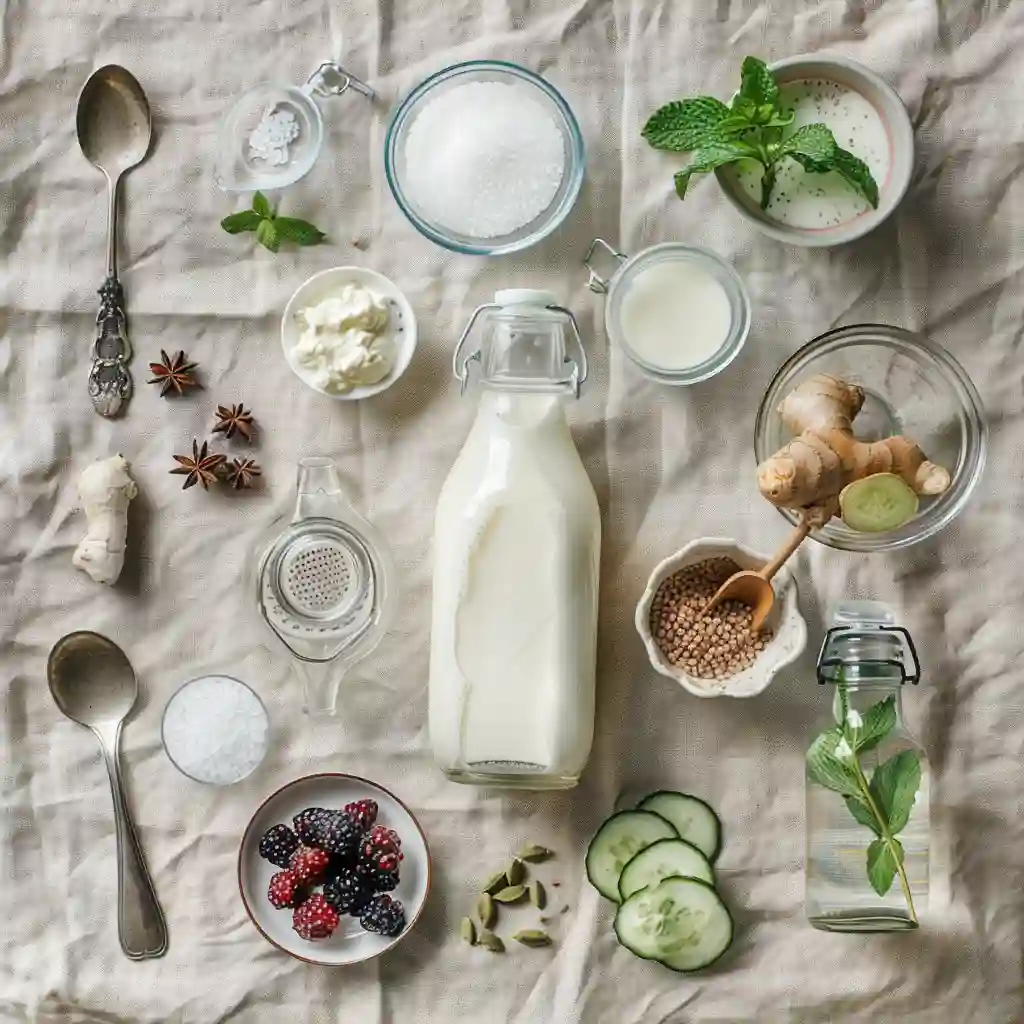
To get started, you don’t need fancy tools. Most fermented milk beverages can be made with just milk, a glass jar, and a starter culture like kefir grains or yogurt. For kefir, you combine the grains with milk and let it sit at room temperature for 24 to 48 hours. The microbes do their thing, thickening the milk and adding that signature tang. After straining out the grains, you’ve got a fresh, probiotic-rich drink.
Lassi is another easy option. Blend plain yogurt with chilled water, a pinch of salt, or a dash of cardamom for a traditional twist. I often toss in fresh mint or cucumber to make it more refreshing. These are the kinds of fermented milk beverages that become daily habits—simple, customizable, and deeply nourishing.
The key is patience. Fermentation is gentle and slow. Some drinks will be tangier than others, depending on temperature and fermentation time. I like to taste as I go, adjusting for flavor. Once you get the hang of it, you can even experiment with goat’s milk or coconut milk blends to find your favorite twist.
If you’ve never tried making your own fermented milk beverages, I highly recommend starting with kefir or salty lassi. They’re forgiving recipes, and the reward is well worth it. You’ll not only save money but also gain a deeper connection to what you’re drinking—something no bottled drink can replicate.
Check out this probiotic soda for a creative fizzy take on fermented drinks beyond dairy.
Store-Bought Options: What to Look For in Fermented Milk Beverages
Let’s be honest—not everyone has time to make fermented milk beverages from scratch. I get it. Between busy mornings and late-night recipe testing, I often reach for store-bought versions too. But here’s what I’ve learned: not all commercial fermented drinks are created equal.
First, flip the bottle and read the label. A real fermented milk beverage should list live or active cultures. That’s where the gut-supporting magic lies. If you see pasteurized after fermentation, it likely means the good bacteria were killed off—leaving you with a flavored milk drink, not the real deal. I always look for phrases like “contains live probiotics” or “active cultures.”
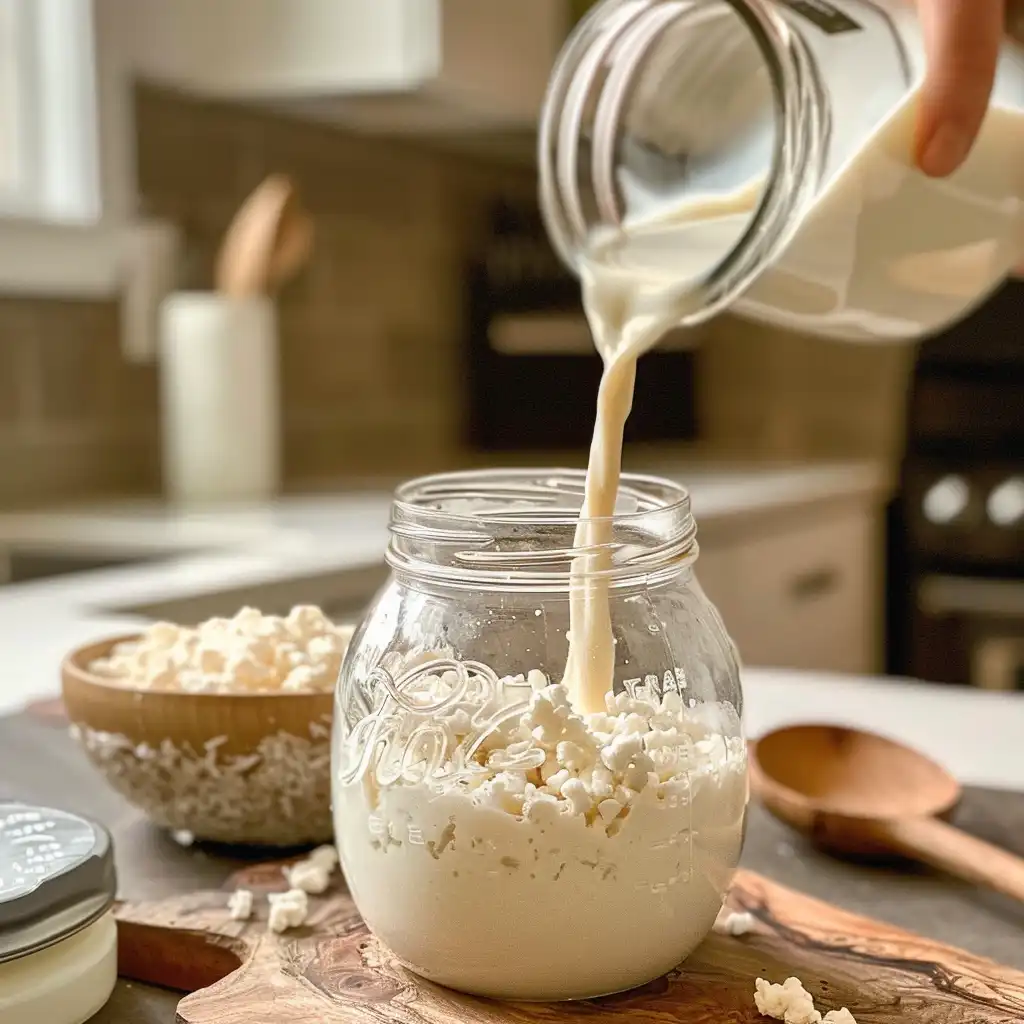
Second, watch the sugar. Many popular fermented milk beverages come with unnecessary added sugars, especially flavored varieties. While a touch of honey or fruit is fine, I aim for options with less than 8g of sugar per serving. From my fridge right now, I’m loving a plain goat milk kefir from a small local farm—it’s tangy, unsweetened, and absolutely refreshing.
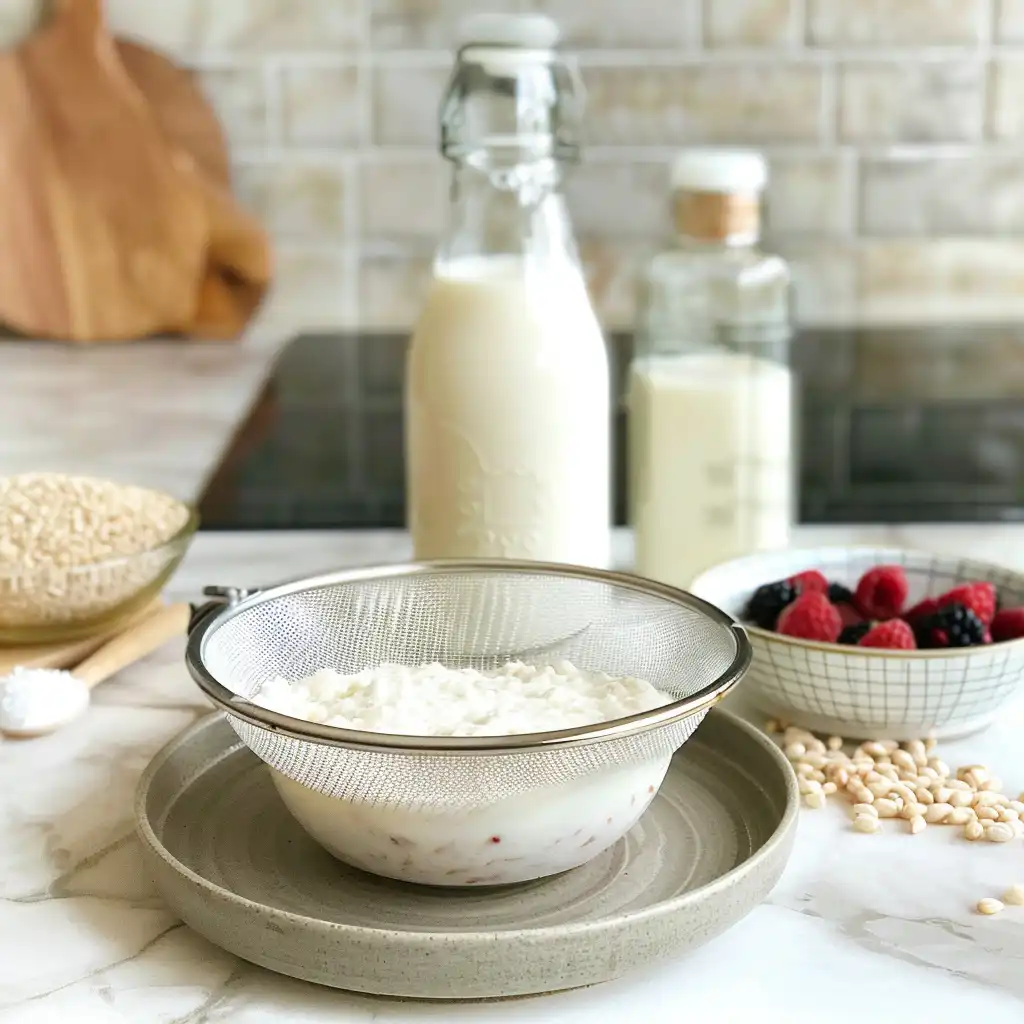
Also, consider the source. Organic or grass-fed milk can make a difference, not just in flavor but in nutrient content too. While browsing online, I found this fermented probiotic lemonade guide that reminded me how sourcing matters for fermented drinks beyond dairy as well.
Another tip: don’t skip the refrigerated section. Shelf-stable drinks may be convenient, but the best fermented milk beverages often need to stay cold to preserve those live cultures. If you’re new to the world of fermented dairy, try starting with plain kefir or drinkable yogurt—just enough tang to get you hooked, without overwhelming your taste buds.
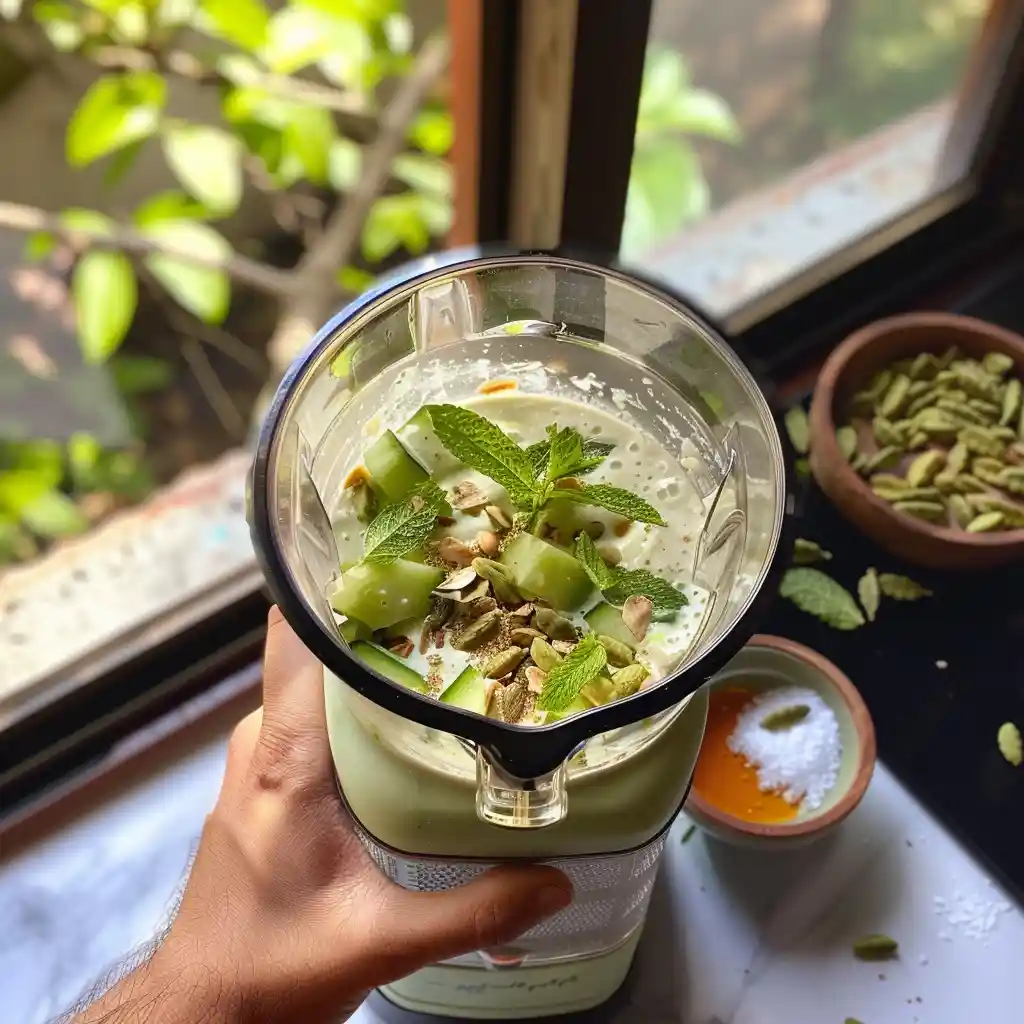
Choosing wisely can turn your quick grocery run into a nourishing ritual. And once you find a brand you love, you may even be inspired to recreate it at home. That’s how my own fermentation journey began—with one curious bottle of kefir that led to an obsession with making my own.
Fermented Milk vs. Other Dairy Drinks
One of the most common questions I get from friends dipping their toes into fermented milk beverages is: “How is this different from yogurt or buttermilk?” That was my confusion too, once upon a time. While all of them fall under the dairy umbrella, the differences are subtle but important.
Yogurt is technically a fermented dairy product, but it’s usually eaten with a spoon and cultured with only a couple of strains of bacteria. In contrast, fermented milk beverages like kefir contain a much broader range of microbes—sometimes 10 to 30 strains—and they’re meant to be sipped, not scooped. This diversity is why kefir is often considered more potent when it comes to probiotic content.
Buttermilk, especially the kind found in most grocery stores, is often a cultured product rather than the true liquid left from churning butter. While it’s mildly tangy, it lacks the microbial richness found in traditional fermented milk beverages. I’ve used it in baking, but for sipping, I always reach for something like lassi or ayran.
Then there are plant-based alternatives. Fermented almond, soy, and coconut milk drinks are growing in popularity, especially among vegans. While they mimic the texture and sometimes flavor of dairy, they may not offer the same bacterial diversity unless clearly labeled with added live cultures. I tried a coconut kefir recently—it had a nice tang, but I still prefer the full-bodied taste of traditional fermented milk.
What’s better for gut health? That depends on your body and taste preferences. Some people feel great after switching to fermented milk beverages, while others find yogurt or plant-based drinks easier to digest. I recommend sampling a few types and tuning into how your body responds.
For a side-by-side comparison, I made a table to help simplify your decision.
| Drink Type | Fermentation Level | Typical Bacteria Count | Drinkable? |
|---|---|---|---|
| Yogurt | Moderate | 2–5 strains | Usually spooned |
| Kefir | High | 10–30 strains | Yes |
| Buttermilk | Low | 1–2 strains | Yes |
| Plant-Based Kefir | Varies | Depends on brand | Yes |
Fermented milk beverages offer something distinct in both flavor and function. They bridge the gap between traditional dairy and functional nutrition—making them a smart, tasty choice for anyone curious about gut health and global food traditions.
Who Should Avoid Fermented Milk Beverages?
As much as I love fermented milk beverages, they aren’t for everyone. I learned this the hard way when I introduced kefir to a friend who was lactose intolerant. She assumed the fermentation would make it totally safe, but her stomach told a different story. That afternoon taught me a valuable lesson: even the healthiest drink isn’t one-size-fits-all.
Let’s start with dairy sensitivities. While fermentation does break down much of the lactose in milk, traces can still remain. People with mild intolerance might be fine sipping certain fermented milk beverages, especially those that are longer-fermented like kefir. But for anyone with a true dairy allergy, it’s a clear no-go. Always read labels, and when in doubt, check with a healthcare provider.
Children and pregnant women may also need to approach with care. Not because fermented milk beverages are inherently unsafe, but because of how their bodies respond to certain live cultures. I didn’t give my toddler niece any homemade kefir until her pediatrician gave the green light. When we finally did, we mixed it with banana and a touch of cinnamon—she loved it!
People with compromised immune systems might also want to avoid raw or homemade versions. Since homemade fermentation isn’t regulated like commercial processing, there’s always a small risk of contamination if not handled properly. I always clean my jars thoroughly and use fresh milk to keep things safe.
For anyone on medication that affects digestion, like antibiotics, the timing of consuming probiotic-rich drinks matters. Some experts suggest spacing out fermented foods by a few hours to avoid interaction. Again, not medical advice—just a habit I picked up after reading a few trusted food safety sources.
Despite these caveats, most people can enjoy fermented milk beverages without issue. Still, it’s good to listen to your body. Try a small amount first and see how it makes you feel. And remember, not liking the taste at first doesn’t mean it’s not for you—I hated kefir the first time I tried it. Now, it’s a staple in my fridge.
Check out this refreshing calamansi drink for a dairy-free, citrusy alternative if you’re not quite ready for fermented milk.
Fermented Milk in Culinary Use
I used to think fermented milk beverages were just for drinking, but wow—was I wrong. Over time, I’ve found they’re surprisingly versatile in the kitchen. From tangy marinades to fluffy pancakes, these probiotic-rich liquids bring depth and brightness to so many dishes.
One of my favorite discoveries was using kefir as a base for salad dressing. I whisk it with olive oil, garlic, lemon juice, and herbs, and it gives a creamy texture without needing mayo or cream. The live cultures also give it a subtle zing that lifts the whole salad. It’s now a fridge staple, right next to my usual jar of lassi.
Fermented milk beverages also shine in baking. I’ve swapped out buttermilk in pancake recipes for kefir with fantastic results. The bubbles created by fermentation help make baked goods light and fluffy. Once, I even used plain kefir to marinate chicken overnight—the result was juicy, tender, and packed with flavor.
Another trick I picked up while experimenting: add a splash of ayran or lassi to smoothies for extra creaminess and gut-friendly goodness. I usually blend it with berries, spinach, and banana. The flavor is refreshing, and the probiotics make it a functional snack.
I once tried making a ranch-style dressing using kefir instead of sour cream. The texture was perfect, and the tang added a whole new layer of complexity. It quickly became my go-to dip for veggies and roasted potatoes. It’s wild how one bottle of fermented milk beverages can open up so many flavor options.
So if you’ve been sipping and wondering what else you can do, start experimenting. Use it anywhere you’d normally add yogurt, sour cream, or buttermilk. You might be surprised how much richness it brings to everyday cooking.
Don’t miss our kefir soda recipe if you’re craving a fizzy twist to your fermented creations.
Sustainability and the Revival of Fermentation
One unexpected thing I learned while falling in love with fermented milk beverages is how deeply connected they are to sustainability. Long before refrigeration, fermentation was a way for families to preserve milk and avoid waste. And now, in today’s world of convenience and over-packaging, this age-old method is making a powerful comeback.
In my own kitchen, I’ve found that making fermented milk beverages helps reduce food waste. Got milk that’s nearing its expiration date? You can ferment it into kefir instead of tossing it. Leftover whey from homemade yogurt or kefir? I reuse it in bread dough, smoothies, or even as a plant fertilizer. Fermentation helps stretch your groceries further and creates less waste overall.
Supporting local dairies is another bonus. I get my milk from a nearby farm that uses ethical practices and reusable glass bottles. When I ferment it at home, I skip plastic packaging entirely. That small switch not only supports my local economy but also cuts down on single-use waste—a win-win in my book.
The growing interest in fermented milk beverages also opens doors for artisanal producers. I’ve visited a few small-batch dairy farms that now offer kefir, yogurt drinks, and lassi made with seasonal ingredients. These aren’t just delicious; they’re part of a bigger movement that values slow food, minimal processing, and transparency.
Fermentation also aligns with the zero-waste kitchen philosophy. When I strain kefir, I never throw away the extra whey. It becomes a base for pancake batter, a tenderizer for meats, or even a tangy ingredient in smoothies. It’s amazing how nothing goes to waste when you think like an old-school cook.
In many ways, fermented milk beverages feel like a return to the basics—simple, nourishing, and rooted in tradition. But they’re also incredibly modern, offering a sustainable way to enjoy dairy without the guilt. Whether you’re buying them from a farmers market or brewing them at home, you’re participating in a time-tested system that values the planet as much as your palate.
FAQs About Fermented Milk Beverages
As someone who’s obsessed with trying new fermented milk beverages, I get tons of questions from friends and readers. Some are curious, some skeptical, and others just unsure where to begin. So, let’s clear up the most common ones.
What are fermented milk drinks?
Fermented milk beverages are dairy-based drinks made by introducing beneficial bacteria or yeast to milk. This fermentation process alters the texture and flavor, resulting in a tangy, often slightly fizzy beverage packed with probiotics. They’ve been consumed for centuries in various cultures and are known for their potential gut health benefits.
Curious how kefir fits into your wellness routine? Don’t miss our fermented garlic honey recipe—it pairs beautifully with tangy dairy drinks for an immune-supporting combo.
Conclusion: Why Fermented Milk Beverages Belong in Every Kitchen
After years of experimenting with different fermented foods, I can confidently say that fermented milk beverages have earned their place in my daily routine. They’re not just drinks—they’re a blend of culture, health tradition, and real flavor.
From kefir’s complex tang to lassi’s creamy comfort, these drinks bring so much variety to the table. I love how they can be customized to suit personal taste or dietary needs. Want something fizzy and tart? Go for kefir. Prefer a spiced, cooling sip on a hot day? Whip up a lassi. Even a splash of ayran can elevate a simple meal.
But more than taste, it’s what these fermented milk beverages represent—an easy way to reconnect with age-old food practices. They require minimal ingredients, reduce waste, and offer that special feeling of making something alive in your kitchen. Every time I swirl my jar of kefir, I’m reminded that some of the best things in life don’t come from a box.
If you’ve never tried making your own, don’t be intimidated. Start small. Grab some kefir grains or plain yogurt, pour in some milk, and let the microbes do their work. There’s something magical about watching a simple jar of milk transform into something nourishing.
And if DIY isn’t your thing? That’s okay too. There are amazing store-bought options that deliver similar benefits. Just remember to check for live cultures, avoid excess sugar, and support ethical brands when possible.
Fermented milk beverages offer more than just nutrition—they offer connection. To tradition, to your gut, and maybe even to the slower, more intentional side of life. And in a world that’s constantly rushing, a cold glass of lassi or kefir might just be the pause you didn’t know you needed.
Looking for more refreshing gut-friendly recipes? Don’t miss our fermented probiotic lemonade guide and follow us on Facebook or get inspired by our Pinterest boards packed with dairy-free and probiotic-rich ideas.
